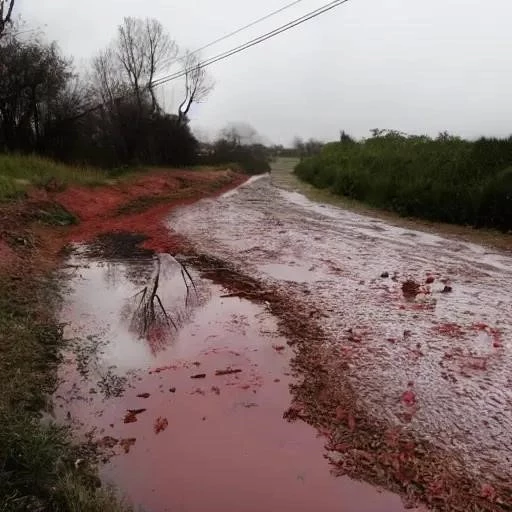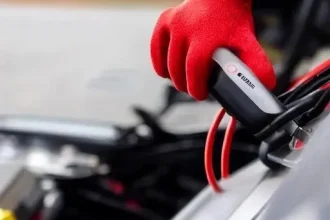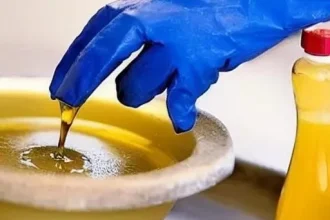Today is 09/23/2025 09:14:10 ()
The hum of a well-tuned engine is music to any driver’s ears, a symphony of precision engineering. Yet, beneath this seemingly calm exterior, a silent saboteur often lurks, ready to transform a smooth journey into a roadside nightmare: the insidious combination of engine overheating and a leaking transmission fluid. Far from mere inconveniences, these intertwined issues represent a critical threat to your vehicle’s longevity and your safety on the road. Understanding their complex interplay is not just about mechanics; it’s about safeguarding your investment and ensuring peace of mind, propelling you forward with confidence.
For decades, the automotive industry has ingeniously integrated the cooling of vital components. Your vehicle’s radiator, primarily tasked with dissipating engine heat, often houses a crucial, yet vulnerable, transmission fluid cooler. This brilliant design, while space-efficient, creates a delicate balance. When this internal cooler fails, it paves the way for a catastrophic mixing of coolant and transmission fluid – a milky, destructive concoction that rapidly compromises both systems. This insidious blend dramatically reduces the cooling efficiency, escalating engine temperatures, and simultaneously degrading the transmission’s lubricating and hydraulic properties, setting the stage for imminent failure and potentially leaving you stranded.
| Category | Details |
|---|---|
| Core Problem | Engine Overheating & Transmission Fluid Leaks |
| Key Symptoms | Visible fluid drips (red for ATF, blue-green for coolant) on driveway, milky fluid in radiator/reservoir, grinding noises during gear shifts, abnormal hard shifting, steam billowing from engine bay, burning smell, transmission slipping, loss of power. |
| Common Causes | Internal transmission cooler failure within the radiator, damaged transmission cooler lines or fittings, cracked radiator tank (especially plastic end tanks), faulty radiator cap, worn thermostat, severely overheated transmission (causing fluid expulsion from its vent). |
| Immediate Actions | Safely pull over immediately, turn off the engine, allow sufficient time for cooling (do NOT open hot radiator cap), check fluid levels (coolant & transmission), avoid driving, and promptly seek professional diagnostic and repair services. |
| Preventative Maintenance | Regularly inspect the entire cooling system and transmission lines for any signs of leaks or damage. Adhere strictly to manufacturer-recommended schedules for fluid flushes and replacements. Periodically check radiator cap and thermostat functionality. Consider auxiliary transmission coolers for heavy-duty use. |
| Official Website for Reference | AAA Car Care: Cooling System |
Unpacking the Mechanical Malady
The origins of these critical malfunctions are manifold, stemming from various points within your vehicle’s intricate systems. Often, the primary culprit lies within the radiator itself, specifically where the transmission cooler lines connect. These connections, frequently featuring metal threaded inserts cast into plastic, can develop leaks over time due to stress, corrosion, or improper installation after a replacement. A more insidious failure occurs when the radiator’s internal transmission cooler tank ruptures, allowing the higher-pressure transmission fluid to infiltrate the coolant. This mixing creates a distinctly discolored, often milky, fluid that signals severe internal damage. Furthermore, a compromised radiator cap, unable to maintain system pressure, or a malfunctioning thermostat can independently trigger overheating, which in turn can cause an already stressed transmission to expel fluid from its vent, compounding the problem with visible drips.
The Ripple Effect: Expert Insights and Dire Consequences
Ignoring these early warning signs is akin to a pilot disregarding critical instrument readings during flight; the consequences can be dire. As American expert Larry Carley of CarleySoftware.com highlights, even a weak radiator cap can initiate a cascade of problems, leading to overheating by allowing coolant to escape. When transmission fluid contaminates the cooling system, its lubricating properties are severely diminished, turning vital components into abrasive sandpaper. Conversely, coolant entering the transmission can degrade clutch materials and bearings, dramatically shortening the unit’s lifespan. These failures don’t just lead to incredibly expensive repairs; they can result in complete engine seizure or transmission disintegration, transforming your reliable vehicle into an immobile, costly burden and a source of immense frustration.
Paving the Way Forward: Proactive Solutions and Modern Maintenance
Fortunately, preventing such automotive calamities is entirely within reach through diligent maintenance and proactive vigilance. Regularly inspecting your vehicle for tell-tale signs, such as colored fluid drips on your garage floor – typically red for transmission fluid, or blue-green for coolant – can provide invaluable early detection. By integrating insights from advanced diagnostic tools, professional technicians can pinpoint the exact source of a leak, whether it’s a compromised transmission cooler line, a failing radiator, or a worn-out thermostat. Replacing components like the radiator and thermostat with high-quality, OEM-grade parts, as recommended by industry veterans, is an incredibly effective strategy for maintaining system integrity and preventing future breakdowns. Modern automotive care emphasizes predictive maintenance, leveraging routine checks to avert catastrophic failures before they manifest, offering a clear path to enduring reliability.
Your Journey Ahead: Driven by Confidence
In a world increasingly reliant on personal mobility, ensuring your vehicle’s health is paramount. The complex relationship between engine overheating and transmission fluid leaks demands our attention, but it does not demand our despair. With an informed approach, timely inspections, and professional intervention, drivers can confidently navigate the roads, secure in the knowledge that their cherished vehicles are performing optimally. Embracing this forward-looking perspective on vehicle care not only extends the life of your car but also preserves your invaluable peace of mind, allowing you to focus on the journey ahead, unburdened by unexpected mechanical woes and ready for any adventure.






